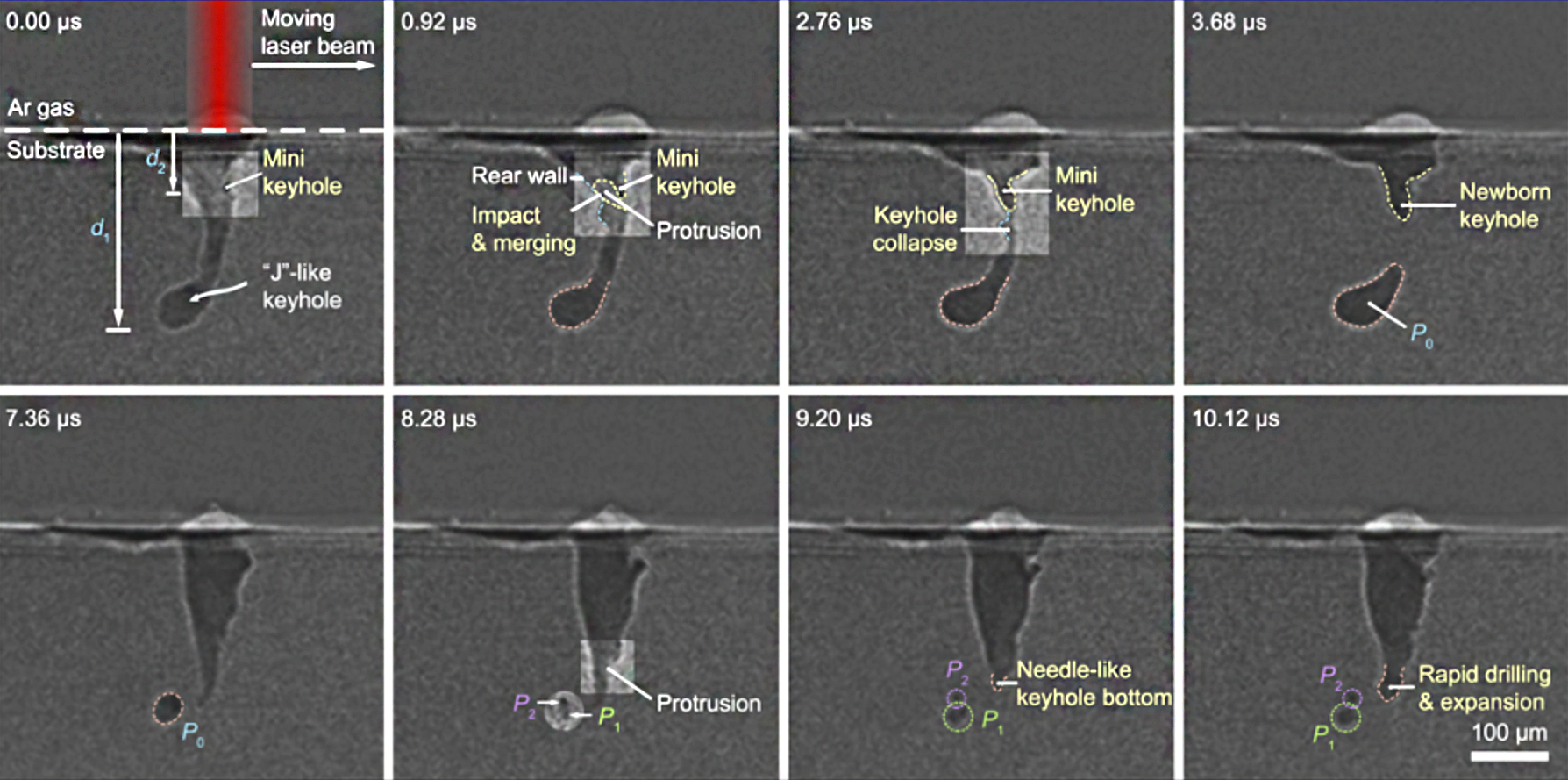
Laser powder bed fusion is a dominant additive manufacturing technology that has yet to reach its full potential. The is because the technology has a problem: tiny bubbles or pores sometimes form during the printing process, and these pores create weak spots in finished products.
When a slow-speed, high-power laser is melting metal powder during the 3D printing of a part, a keyhole-shaped cavity in the melt pool can appear. Pores, i.e. defects, can subsequently form at the bottom of this keyhole. Research reported in a paper in Science now reveals how these pores are generated and go on to become defects trapped in solidifying metal.
"The real practical value of this research is that we can be precise about controlling the machines to avoid this problem," says Anthony Rollett, a professor of materials science and engineering at Carnegie Mellon College of Engineering and a lead co-author of the paper.
Building on previous research that quantified the keyhole phenomenon, the research team used extremely bright, high-energy X-ray imaging to identify instabilities in the keyhole. This revealed that pores form during fluctuations of the keyhole that change its shape: the keyhole tip morphs into a 'J' shape and pinches off. This unstable behavior generates acoustic waves in the liquid metal that force the pores away from the keyhole so that they survive long enough to get trapped in the resolidifying metal. The team is the first to focus on this behavior and identify what is happening.
"When you have a deep keyhole, the walls oscillate strongly," Rollett explains. "Occasionally, the oscillations are strong enough at the bottom of the keyhole that they pinch off, leaving a large bubble behind. Sometimes this bubble never reconnects to the main keyhole. It collapses and generates an acoustic shock wave. This pushes the remaining pores away from the keyhole."
It's important to note that keyholes themselves are not flaws, because they can increase the efficiency of the laser. Using synchrotron X-ray equipment at Argonne National Laboratories, the only facility in the US where these experiments could be run, the researchers noted that there is a well-defined boundary between stable and unstable keyholes.
"As long as you stay out of the danger zone [i.e., too hot, too slow], the risk of leaving defects behind is quite small," says Rollett.
Fluctuations in the keyhole's depth increase strongly with decreasing scan speed and laser power on the unstable side of the boundary. "You can think of the boundary as a speed limit, except it is the opposite of driving a car. In this case, it gets more dangerous as you go slower. If you're below the speed limit, then you are almost certainly generating a defect," says Rollett.
On a broader scale, proving the existence of well-defined keyhole porosity boundaries and demonstrating the ability to reproduce them offers a more secure basis for predicting and improving printing processes. Rollett, who is the faculty co-director of Carnegie Mellon's Next Manufacturing Center, thinks that the findings from this research will quickly find their way into how companies operate their 3D printers.
This story is adapted from material from Carnegie Mellon College of Engineering, with editorial changes made by Materials Today. The views expressed in this article do not necessarily represent those of Elsevier. Link to original source.


